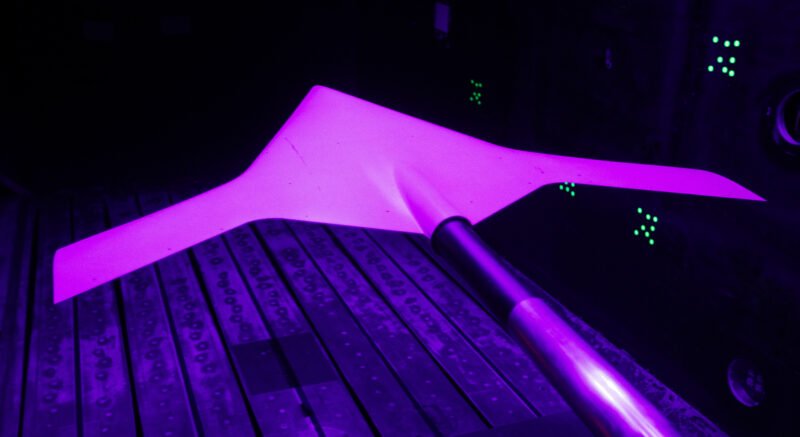Quick Takeaways
-
Revolutionary Speed & Resolution: NASA’s unsteady pressure sensitive paint (uPSP) technology accelerates data acquisition in wind tunnel testing by 10,000 times and enhances image resolution by 1,000 times compared to traditional methods.
-
Real-Time Data Utilization: Engineers can access critical wind tunnel data within 20 minutes, allowing for immediate adjustments and significantly reducing the typical weeks-long wait for analysis and retesting.
-
Improved Aerodynamic Insights: uPSP provides detailed pressure readings over an entire model’s surface, eliminating the need for estimation and enabling better understanding of aerodynamic forces and structural integrity.
- Broad Accessibility: The uPSP system, developed over five years, will be available for joint use by NASA, industry, academia, and other government agencies, solidifying NASA’s leadership in advanced wind tunnel capabilities.
NASA Advances Pressure Sensitive Paint Research Capability
Many of us grew up using paint-by-number sets to create beautiful color pictures. Now, NASA engineers have flipped that childhood pastime into groundbreaking research. They use “numbers-by-paint” through pressure sensitive paint (PSP) to analyze aircraft and rocket designs in wind tunnels.
Recently, NASA made significant advancements in PSP technology. High-speed cameras and supercomputers now enhance this process. Researchers have achieved a remarkable 10,000 times increase in speed and 1,000 times higher resolution. With these improvements, they can provide critical data much faster than before.
The main upgrade revolves around a new term: unsteady pressure sensitive paint, or uPSP. This technology allows scientists to observe turbulent air patterns with more detail. As a result, they can gather important wind tunnel data in as little as 20 minutes. This rapid analysis enables engineers to adjust their tests in real time, drastically reducing wait times for subsequent tests.
The previous method often required weeks for data analysis, but now the process offers real-time benefits. The new capability provides immediate insight for aerodynamic and structural engineers. This is a game changer for the aerospace community.
Using both PSP and uPSP, researchers apply a special paint to scale models of aircraft. In wind tunnels, specific lights illuminate the models, and cameras capture the resulting brightness. The paint’s color changes with air pressure, making it easy to visualize pressure distribution across the entire model. Darker shades indicate higher pressure, and lighter shades signal lower pressure.
Traditionally, engineers used sensors connected to plastic tubes to measure pressure at specific points on a model. This approach limited their ability to understand the overall behavior of the vehicle. With PSP, the entire surface yields continuous pressure readings, eliminating the need for estimation.
The success of uPSP stems from a five-year effort that began in 2019. Researchers aimed to refine the technology for better data acquisition and visualization. They focused on NASA’s Unitary Plan Facility’s wind tunnel and linked it to the Advanced Supercomputing Facility. The results of this collaboration are now paving the way for future experiments.
Following the Artemis I uncrewed lunar mission, researchers are eager to compare flight data with wind tunnel results. This analysis will help validate predictions and enhance vehicle designs.
Looking ahead, NASA plans to deploy uPSP to additional wind tunnels. They also aim to engage with industry and academia, making this innovative technology accessible beyond the agency. In doing so, NASA seeks to enhance research capabilities and maintain its leadership in aeronautics and spaceflight.
The advancements in uPSP technology reinforce NASA’s commitment to innovation and collaboration. This tool promises to improve not only aerodynamics but also the safety and efficiency of future space missions. As these developments unfold, they signify a brighter future for aerospace engineering and exploration.
Discover More Technology Insights
Learn how the Internet of Things (IoT) is transforming everyday life.
Explore past and present digital transformations on the Internet Archive.
SciV1

